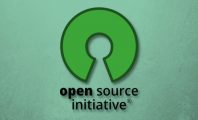OSI Aims for Industry Standard by Defining ‘Open Source AI’
August 26, 2024
Creating a universal definition of “open source AI” has generated a fair amount of debate and confusion, with many outfits using elastic parameters in order to achieve a fit. Now the Open Source Initiative (OSI) — “the authority that defines Open Source” — has issued what it hopes will become the baseline definition. That definition, which includes the ability to “use the system for any purpose and without having to ask for permission,” excludes a lot of AI platforms that currently describe themselves as “open,” many freely available only for non-commercial use. OSI’s remaining three parameters involve the ability to inspect the system and modify and share it.
The complete definition is set out by OSI on a web page that explains that “massive benefits accrue to everyone after removing the barriers to learning, using, sharing and improving software systems” that are truly made available as open source.

OSI says an open source AI model “consists of the model architecture, model parameters (including weights) and inference code for running the model.” The group defines AI weights as “the set of learned parameters that overlay the model architecture to produce an output from a given input.”
Going forward, it’s reasonable to expect that adherence to the OSI’s open source definition will be how most AI users will be evaluating system licensing. Mozilla has already endorsed the OSI open source definition.
In addition to helping lawmakers protect the citizenry by regulating AI, a universally accepted definition will also help establish marketing parameters that inform businesses and consumers.
“The U.S. National Telecommunications and Information Administration (NTIA) recently issued a seminal report embracing openness in AI,” Mozilla notes. “Even companies like Google, Microsoft, Apple, and Meta are beginning to open certain aspects of their AI systems.” Despite being open in “certain aspects,” none meet the OSI definition.
“Although we know that the decisions of OpenAI and Anthropic to keep their models, data sets, and algorithms secret makes their AI closed source, some experts argue that Meta and Google’s freely accessible models, which are open to anyone to inspect and adapt, aren’t truly open source either, because of licenses that restrict what users can do with the models and because the training data sets aren’t made public,” writes MIT Technology Review.
“Many companies claim their AI models are open source without really being open at all,” ZDNet reports, pointing out that some of those companies participated in crafting the new OSI definition, which was created “collaboratively with diverse stakeholders worldwide,” including tech giants like Microsoft, Google, Amazon and Meta Platforms as well as neutral outfits like Hugging Face, the Apache Software Foundation, the Wikimedia Foundation, the Linux Foundation and Creative Commons.
OSI hopes to unveil a final definition at October’s All Things Open conference. While not everyone will be thoroughly satisfied with the result, it will be one that most, if not all, “can agree promotes transparency, collaboration, and innovation in open-source AI systems,” ZDNet suggests.

No Comments Yet
You can be the first to comment!
Leave a comment
You must be logged in to post a comment.